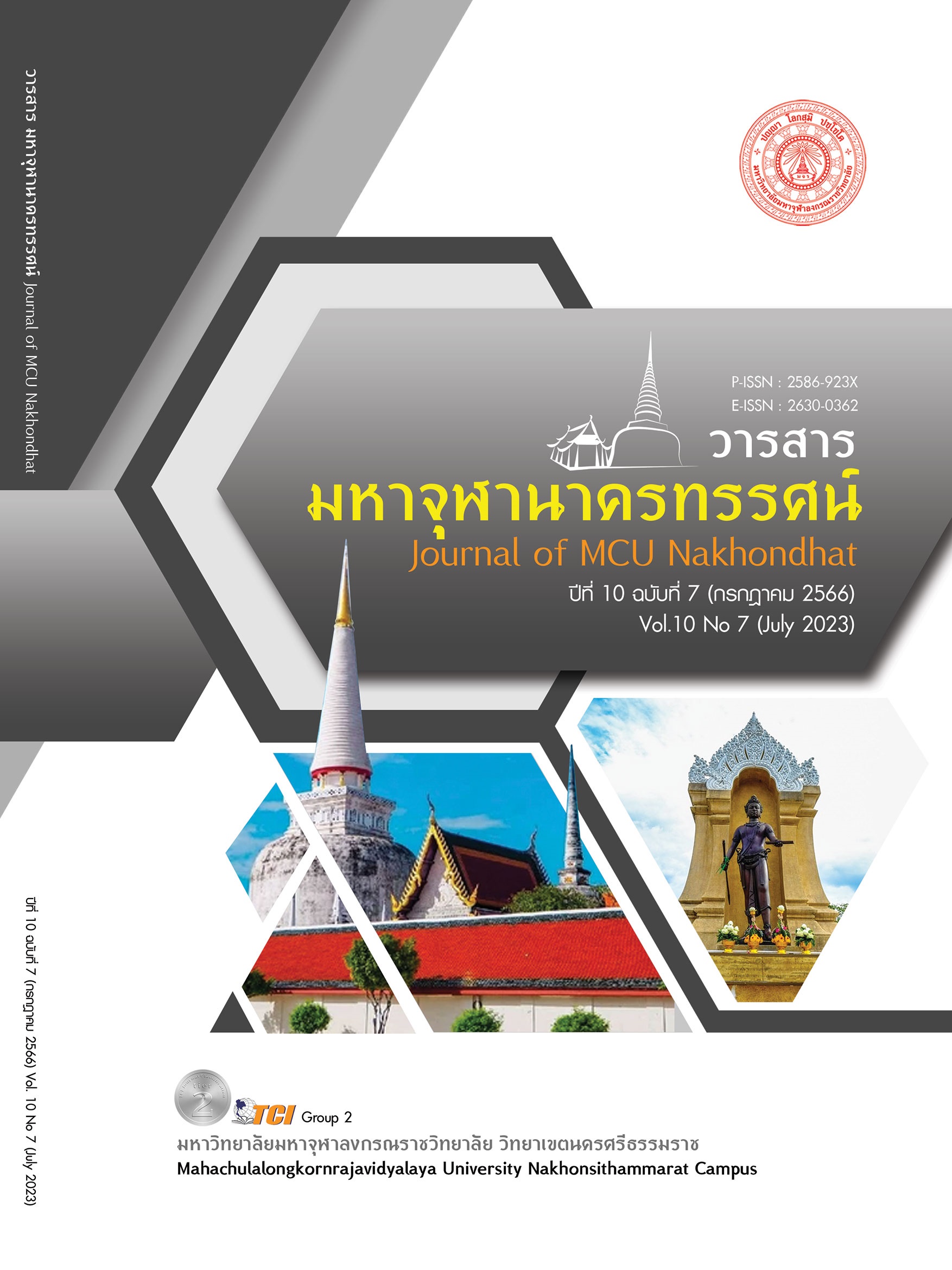ASSESSMENT OF THE MORAL AND INTEGRITY DEVELOPMENT PROJECT FOR STUDENTS OF WATMAISUKONTARAM (PINRATANARAS) SCHOOL
Main Article Content
Abstract
The objectives of this research were to: 1) the content to assess; consistency between policy principles, objectives, goals and activities of the project. 2) to evaluate the primary factors; the availability of personnel, materials, facilities, budget and management system. 3) to evaluate the implementation process; operational steps of the planning and evaluation of the project activities. And 4) to evaluate the productivity; the effects of the project on the subject, honestly 5 features; thinking skill, disciplined, honest, self- sufficiency of economy and public mind. This research is evaluation research. The sample size was determined using Krejcie and Morgan's table, resulting in a sample of 10 teachers and 140 students. Simple random sampling was employed to select the participants. The research instruments included questionnaires, statistics including percentage, average and standard deviations. The research findings revealed as follows: 1) Overall, the opinions were at a high level. When considering each item, it was found that most of them were at a high level. The item with the highest mean was The objectives of the program are consistent with school policy. 2) Overall, the opinions were at a high level. When considering each item, it was found that most of them were at a high level. The item with the highest mean was School administration is a system that facilitates project activities. 3) Overall, the opinions were at a high level. When considering each item, it was found that most of them were at a high level. The item with the highest mean was to encourage everyone Participate in and see the value of the development of students to create the characteristics of an honest school. and 4) Overall, there was a high level of practice. Considering the items found the highest average as self- sufficiency of economy and the lowest average as thinking skill.
Article Details

This work is licensed under a Creative Commons Attribution-NonCommercial-NoDerivatives 4.0 International License.
References
กฤษพงศ์ อยู่เย็น. (2561). รายงานการประเมินโครงการโรงเรียนคุณธรรม โรงเรียนบ้านสีสุกห้วยโมง. สกลนคร: โรงเรียนบ้านสีสุกห้วยโมง สำนักงานเขตพื้นที่การศึกษาประถมศึกษาสกลนคร เขต 2.
ชัยยันต์ ไม้กลาง. (2561). รายงานการประเมินโครงการโรงเรียนคุณธรรม สพฐ. โรงเรียนโนนสูงศรีธานี. นครราชสีมา: โรงเรียนโนนสูงศรีธานี สำนักงานเขตพื้นที่การศึกษามัธยมศึกษา เขต 31.
บุญชม ศรีสะอาด. (2560). การวิจัยเบื้องต้น. กรุงเทพมหานคร: สุวีริยาสาส์น.
ยงศักดิ์ เชาวน์วุฒิกุล. (2562). รายงานการประเมินโครงการโรงเรียนคุณธรรม สพฐ. สำนักงานเขตพื้นที่การศึกษาประถมศึกษานครศรีธรรมราช เขต 3. นครศรีธรรมราช: สำนักงานเขตพื้นที่การศึกษาประถมศึกษานครศรีธรรมราช เขต 3.
วีระ ปรางค์รัตนศิลา. (2560). รายงานการประเมินโครงการโรงเรียนคุณธรรม สพฐ. กรุงเทพมหานคร: โรงเรียนพญาไท สำนักงานเขตพื้นที่การศึกษาประถมศึกษากรุงเทพมหานคร.
ศักดิ์อนันต์ อนันตสุข. (2562). รายงานการประเมินโครงการโรงเรียนคุณธรรม โรงเรียนตาเบาวิทยา. โรงเรียนตาเบาวิทยา. สุรินทร์: สำนักงานเขตพื้นที่การศึกษามัธยมศึกษา เขต 33.
สำนักงานคณะกรรมการพัฒนาการเศรษฐกิจและสังคมแห่งชาติ. (2560). แผนพัฒนาเศรษฐกิจและสังคมแห่งชาติฉบับที่สิบสอง พ.ศ. 2560 - 2564. กรุงเทพมหานคร: สำนักงานคณะกรรมการพัฒนาการเศรษฐกิจและสังคมแห่งชาติสํานักนายกรัฐมนตรี.
Hideki Maruyama. (2013). Moral Education in Japan. Retrieved March 2023, 20, from http://www.nier.go.jp./ English.
Likert, Rensis. (1967). The Method of Constructing and Attitude Scale, in Reading in Attitude Theory and Measurement. Fishbeic, Matin, Ed. New York: Wiley & Son.


